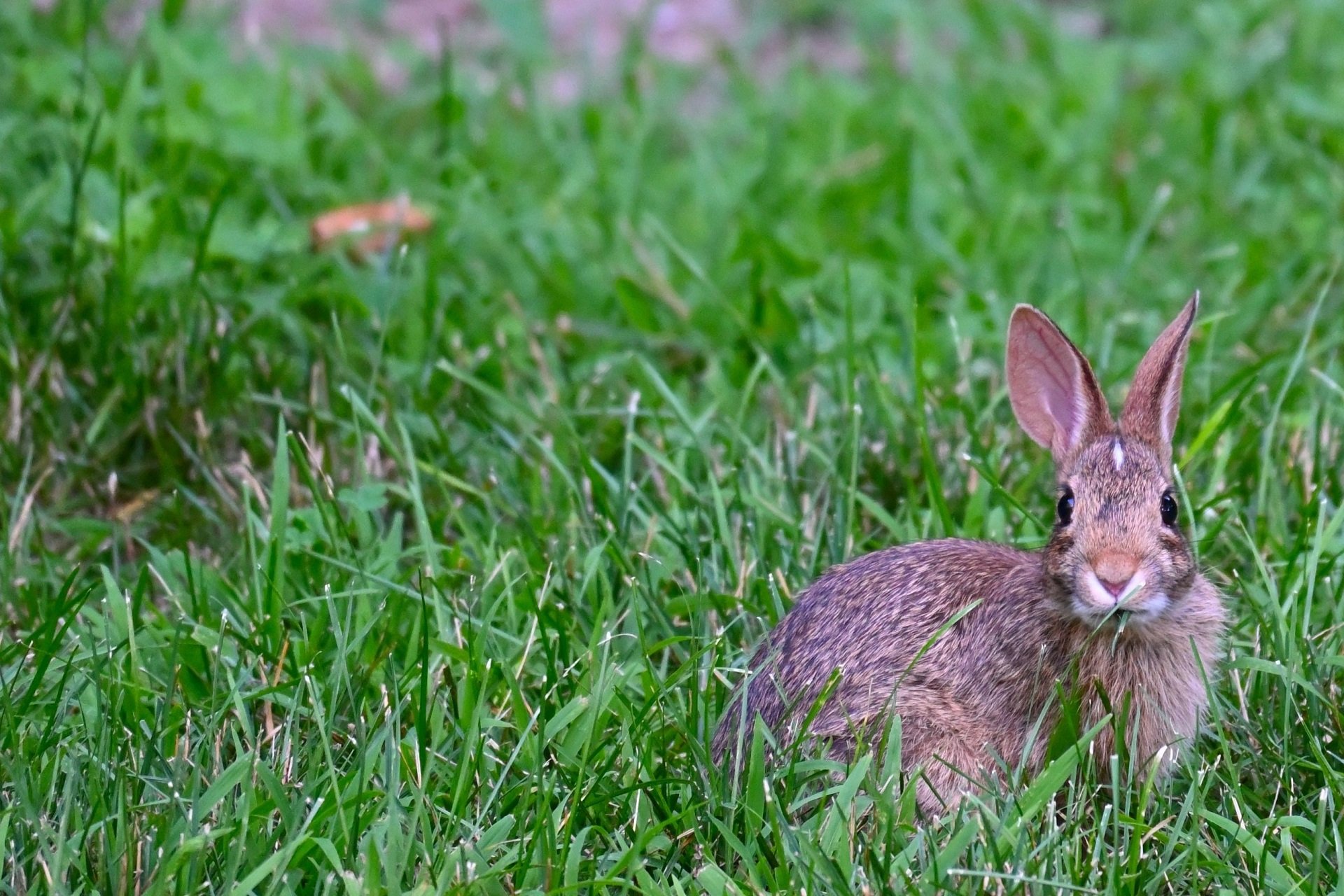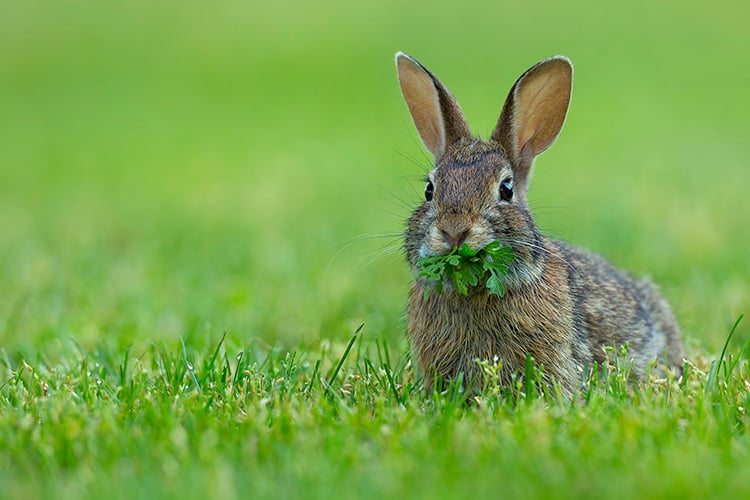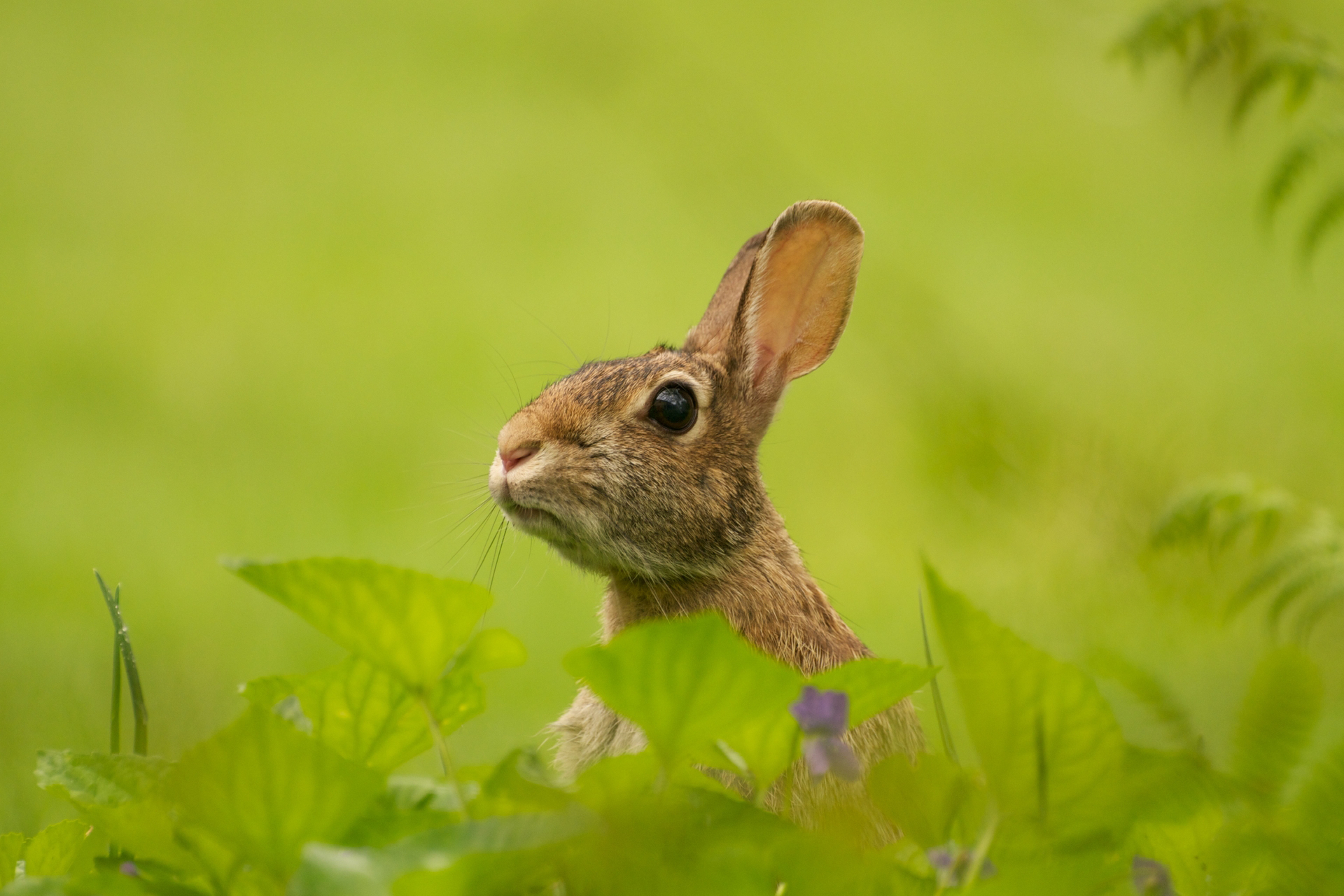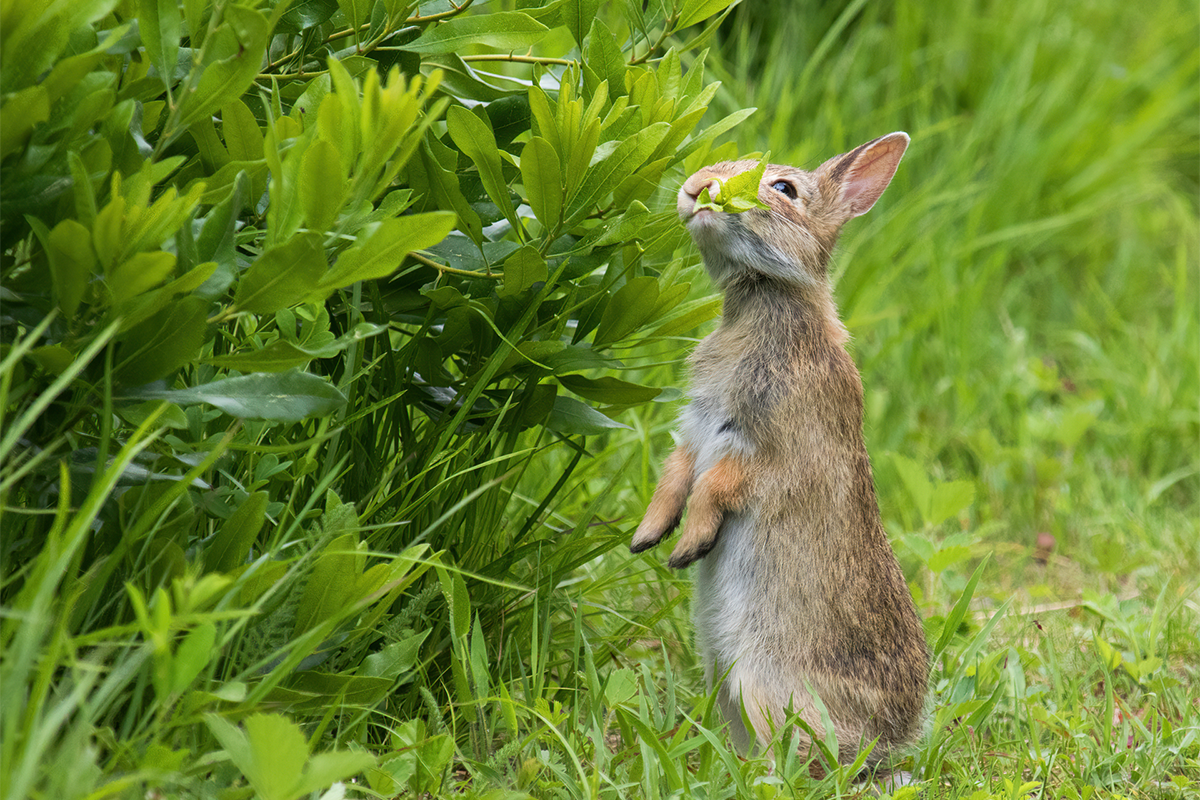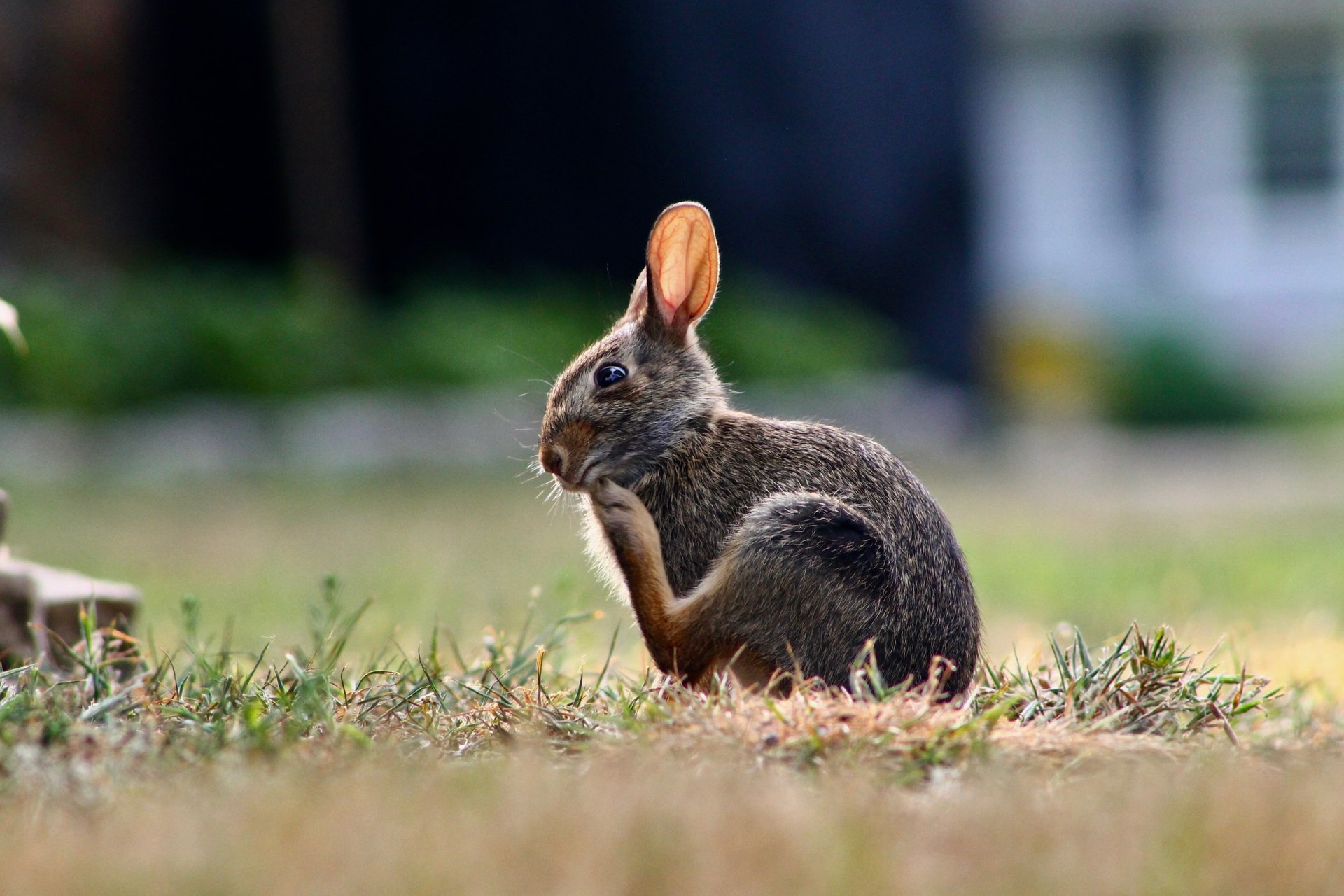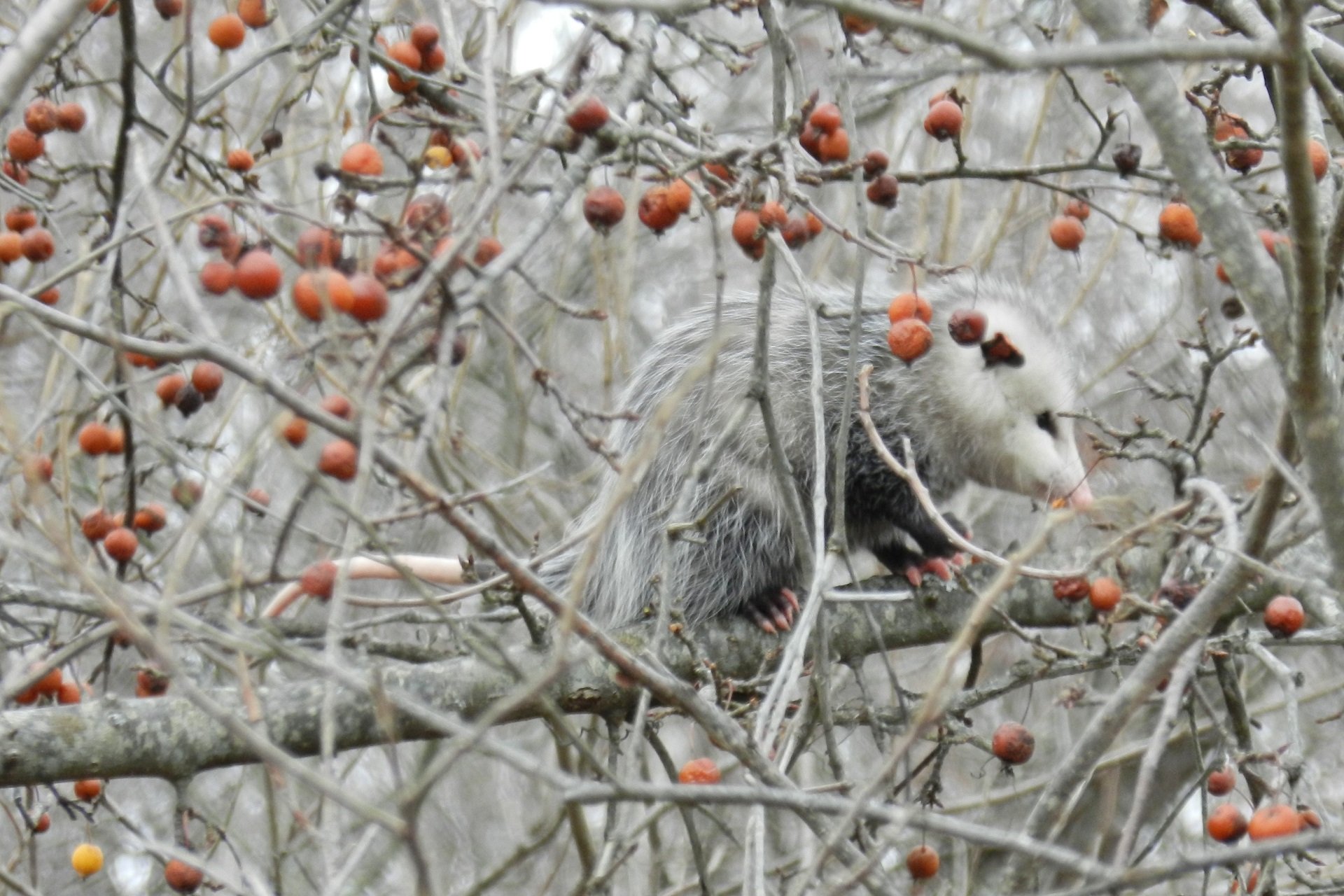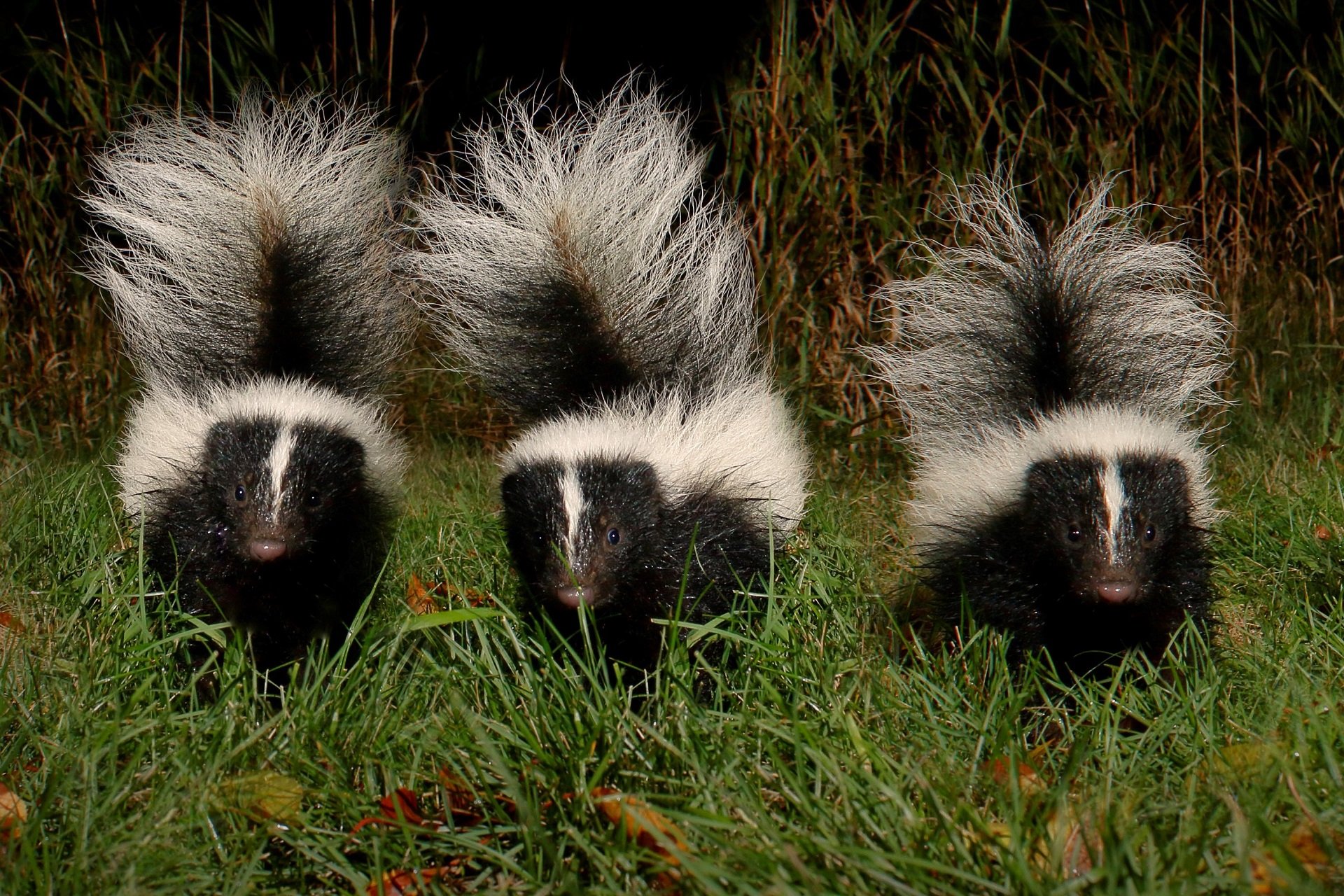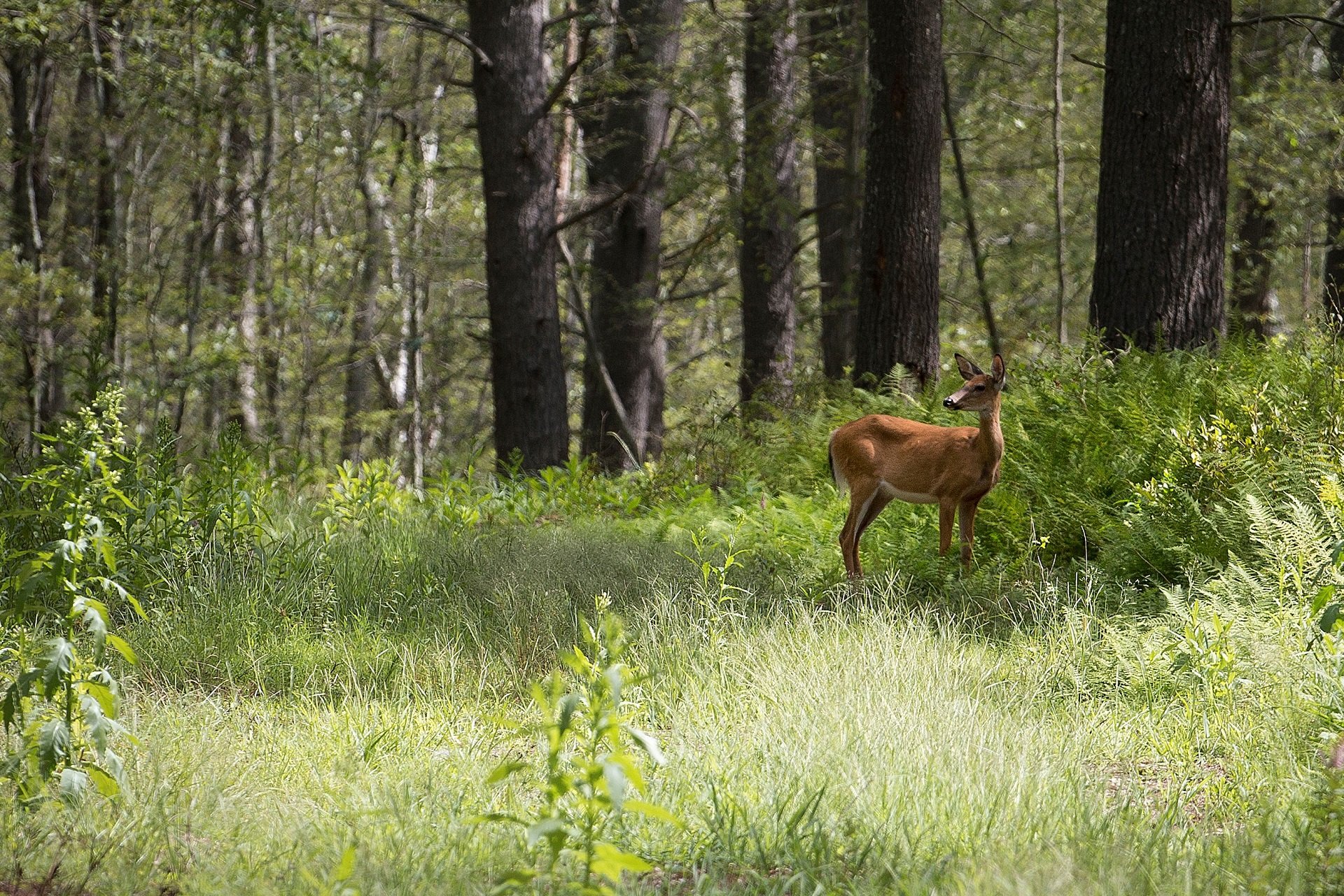Mammals in Massachusetts
Cottontail Rabbits
Massachusetts is home to two species of wild rabbit—the native New England Cottontail and the non-native Eastern Cottontail.
Both species breed in a variety of human-populated habitats including farmland, suburban yards, and even in isolated, weedy patches in the middle of cities. Since both cottontails and people exist in large numbers, they interact quite frequently—particularly when rabbit populations peak in late summer and early fall.
How to Identify a Cottontail
The Eastern Cottontail Rabbit was first introduced to Massachusetts before 1900 and is now by far the most common rabbit in the state. As a result of this intense competition, the New England Cottontail has become rare throughout the state. If you see a rabbit and are not sure which one it is, there are some slightly different features you can keep an eye out for, but it is often very difficult to visually differentiate.
New England Cottontail
These native rabbits have a darker back and usually a black spot between the ears. Their ears are shorter than those on the Eastern Cottontail and are rimmed with a black border. They can grow to be 15 –17 inches long and weigh up to 2 pounds.
Eastern Cottontail
This rabbit has a paler coat, cinnamon-rust nape, and a narrow black margin extending along the front edge and tip of the ear. It sports a white or light brown spot on the forehead and is often much smaller than the New England Cottontail.
Cottontail Rabbit Behavior
Cottontails are solitary creatures that are most active between dusk and dawn. Generally silent, rabbits may communicate by soft grunts and purrs and by thumping the ground with their hind feet. When caught by a predator, they can produce a bloodcurdling scream.
To escape from enemies or to seek shelter from inclement weather, cottontails use any convenient natural or human-made cavity including a culvert, dense thicket, or existing burrow excavated by a woodchuck, fox, or skunk.
Cottontails do not hibernate—they are active year-round. The average Massachusetts cottontail spends its entire life in an area of less than 1.5 acres, although in the winter it may move a mile or so from their summer feeding area to obtain better cover or a new food supply.
What do Cottontail Rabbits Eat?
These rabbits will eat any vegetation—from grass, twigs, and just about anything growing in a garden. While they prefer to eat tender young shoots—clover, dandelions, prized tulips—they may also damage ornamental trees by eating the bark.
Coprophagy (the ingestion of feces) plays a key role in rabbit nutrition. When rabbits defecate, some of their fecal pellets are green and moist and contain undigested food. The rabbit swallows these without chewing them. The repeated passage through the rabbit's gut allows time for bacterial digestion to continue, and more nutrients become available for absorption. This re-digestion of food may be important for the survival of an herbivore that often interrupts its feeding to flee a predator.
When and Where Do Cottontails Breed?
Massachusetts cottontails mate as early as mid-February and as late as September and form no lasting bond. The gestation period occurs for less than 30 days. Litters average five young (rarely as many as eight), and the female is usually receptive to mating soon after giving birth. One doe may produce three litters in a New England season.
When a doe (female) cottontail is ready to give birth, she finds a convenient hole or rock crevice, or digs a shallow “scrape” (four inches or less in depth) in dry ground. She might seek a site with brushy cover, but it’s not unusual to find a nest in the middle of a suburban lawn.
Females line the nest with several layers of fur, grass, leaves, rabbit droppings, and perhaps a bit of paper or other trash. Newborn cottontails are two inches long, weigh less than one ounce, and are naked, blind, and deaf—therefore totally helpless. They mature rapidly, leaving the nest in just over two weeks, and become completely independent by the time they reach three to four weeks old. A young rabbit won’t reach full size for about four months.
Males take no part whatever in the rearing process, and on average, the female feed the young only two or three times per night, rarely visiting the nest otherwise. During the day, she usually rests in a hollow or “form” of her own making, about 20 feet or so from the nest. This parental schedule explains why human observers often assume that rabbit nests have been abandoned.
How long do Cottontail Rabbits Live?
Cottontails have a life expectancy of less than two years. Nearly half the young die within a month of birth, largely because cottontails are important links in many food chains. Foxes, weasels, raccoons, minks, snakes, crows, and several common species of raptors are all at least partially dependent on cottontails for food.
How to Deter Rabbits
While rabbits generally steer clear of people, they can damage gardens. Cottontails don’t dig in the soil for bulbs or roots to eat, but they nibble on the foliage that has been nipped off sharply and leaves no ragged edges.
Rabbits in Your Garden
Options for keeping rabbits from eating your flowers, fruits, and veggies include:
- Spreading dried blood fertilizer around your flowerbeds or vegetable garden.
- Removing any piles of brush and debris that might serve as cover.
- Placing an inexpensive two-foot-high fence of chicken wire (one-inch mesh is needed to keep out the smallest rabbits) around the garden with the bottom tight to the ground or buried underground a few inches.
- Protecting ornamental shrubs by surrounding them with quarter-inch mesh hardware cloth that extends higher than the rabbit can reach when snow is on the ground.
Rabbit Nests or Babies in Your Yard
It is not uncommon for homeowners to come across nests, baby rabbits, or injured rabbits in yards.
If a nest is discovered, the easiest solution is to tolerate its brief presence. Young rabbits leave the nest about two weeks after birth. Don’t attempt to relocate a nest; it’s highly unlikely that the mother cottontail will succeed in finding it. Also, keep pets and children away.
If a baby rabbit is removed from a nest by a person or pet, immediately return the cottontail to the nest. Wear gloves and handle the animal as little as possible to avoid transferring the odor to it. If the rabbit has been handled, rub a large handful of grass between your hands until it’s juicy, then wipe your hands on the rabbit’s head, back, and tail before placing them back in the nest. Hopefully, this will conceal any human odor.
If a rabbit appears in good health and is four or more inches long, return them to where they were found or move them to an area in the yard with shrubbery or uncut grass.
Finding a Sick or Injured Rabbit
Any wild animal that appears to be injured, including cottontails, should be evaluated by a licensed wildlife rehabilitator. Attempts by non-professionals to rear young mammals—especially rabbits—nearly always end in failure, prolonged suffering for the animal, and unnecessary grief for the people involved.
All mammals, including cottontails, are susceptible to rabies. Rabies is a viral disease that attacks the central nervous system and is invariably fatal to wildlife.
How Mass Audubon Helps Cottontail Rabbits
Mass Audubon is helping cottontail rabbits by protecting their habitats, building resilient landscapes, and creating a safe ecosystem where they can thrive. You can help us conserve and protect wild rabbits by becoming a member today.
Stay Connected
Don't miss a beat on all the ways you can get outdoors, celebrate nature, and get involved.



